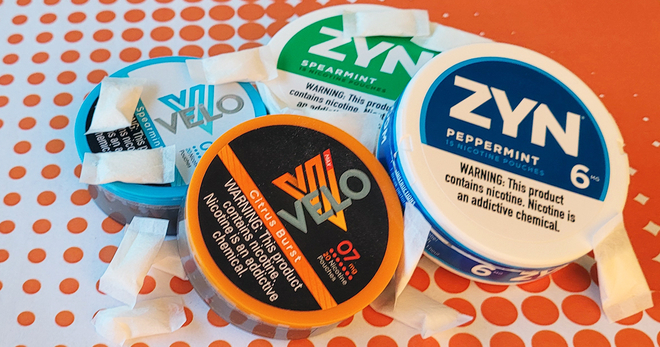Going back to school may lead to more vaping – here’s what educators and communities can do about it
A majority (70%) of young people report they anticipate seeing people vape at similar or higher rates as they go back to school, according to a recent survey of 15- to 24-year-olds by Truth Initiative. As students return to campuses nationwide, schools and communities can help prevent vaping from making a big return alongside them.
Youth vaping remains at epidemic levels, with about one in five high school students and one in 20 middle school students using e-cigarettes in 2020. Truth Initiative research found that early lockdown days of the COVID-19 pandemic brought a drop in youth vaping as youth reported a decrease in retail access and opportunities to share e-cigarettes with others. Since then, national e-cigarette sales have reached record highs and, with in-person student interaction increasing, youth may have more access and exposure to e-cigarettes.
Vaping: Know the truth, a free curriculum from Truth Initiative and Kaiser Permanente in collaboration with the American Heart Association, gives young people facts about e-cigarette use and introduces them to This is Quitting, a first-of-its-kind text message program that is already helping more than 350,000 young people quit vaping. Developed as part of the truth® campaign, the curriculum is a 40- to 45-minute self-administered digital course for middle and high school grade levels.
truth has been proven to help prevent youth vaping. Young people with strong truth brand awareness had 25% lower odds of intending to vape a year and a half later, according to recent research published in BMC Public Health. Accessible to schools and the public at an important time, when e-cigarette use and vaping may exacerbate the dangers of COVID-19, and available through EVERFI, the leading social impact education innovator, Vaping: Know the truth has already educated nearly 170,000 students nationwide.
Share the facts about vaping
Many youth e-cigarette users are unaware vapes can deliver as much as – or more – nicotine than combustible cigarettes. Nicotine can harm the development and nerve cell functioning of an adolescent user’s brain and make them more likely to become addicted to other drugs.
Through four learning modules, young people learn about the hazards of vaping, how e-cigarette marketers target them, the environmental toll of e-cigarette waste, and the benefits of a vape-free life.
“[W]e know there’s a mental health crisis happening,” said Amy Taylor, chief of community engagement at Truth Initiative, “and we provide self-care tips to young people so, instead of vaping, they have other alternatives to deal with their anxiety and stress.”
Help young people quit
One-third of current young e-cigarette users surveyed by Truth Initiative said they tried to quit the previous year, according to research published by Preventive Medicine Reports. Knowing the risks makes a difference – greater awareness of the dangers of vaping more than tripled the odds that a user reported intentions to quit vaping in the upcoming month. Reasons to quit vaping also include cost, freedom from addiction, and social factors such as how the user may be perceived by others.
This is Quitting incorporates text messages from other young people who have attempted to, or successfully quit, e-cigarettes. A randomized clinical trial found that young adults aged 18-24 who used This is Quitting had nearly 40% higher odds of quitting compared to a control group. Researchers found that this higher quit rate was regardless of age, race, ethnicity, gender identity, sexual orientation, nicotine dependence, social influences to vape, and other substance use.
The COVID-19 pandemic increases the urgency of addressing youth vaping. Research published in the Journal of Adolescent Health found that vaping and smoking places a young person at a higher risk of testing positive for COVID-19 . Young people who had ever vaped were five times more likely totest positive with COVID-19 than their peers who had never vaped.
Available free of charge to teachers, students, administrators, parents, and the public at large, Vaping: Know the truth can educate and empower adults and young people alike to face – and end – youth vaping.
More in emerging tobacco products
Want support quitting? Join EX Program
By clicking JOIN, you agree to the Terms, Text Message Terms and Privacy Policy.
Msg&Data rates may apply; msgs are automated.



